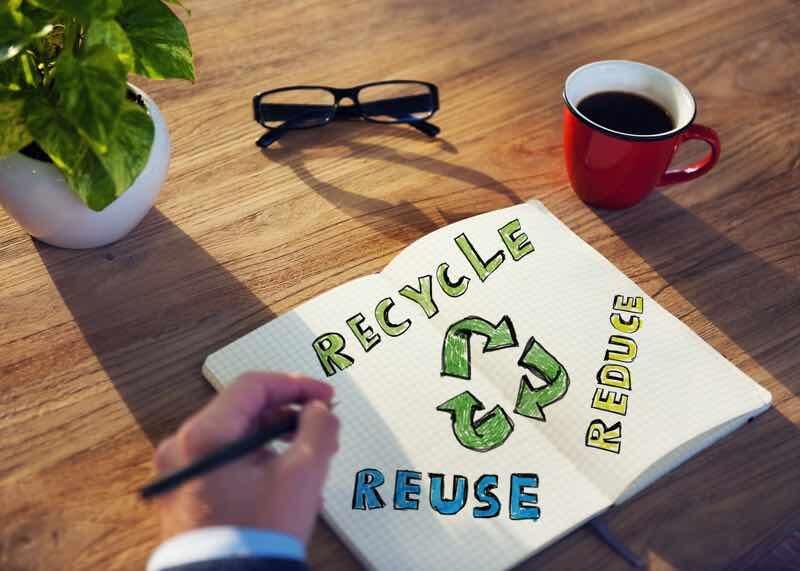The world is increasingly turning its attention to sustainability, and the printing industry is no exception. With the advent of zero waste typography printing, businesses and individuals alike are exploring new ways to reduce their environmental footprint. This innovative approach not only addresses the waste generated in the printing process but also offers a path toward a more sustainable future. In the following sections, we will delve into the principles, benefits, and practices of zero waste typography printing, providing insights for businesses eager to embrace this eco-friendly trend.

Understanding Zero Waste Typography Printing
Zero waste typography printing is an eco-conscious approach that aims to minimize waste at every stage of the printing process. By using sustainable materials, optimizing design, and employing efficient production methods, the goal is to create high-quality printed materials with minimal environmental impact. This concept aligns with the broader zero waste movement, which strives to reduce landfill waste and promote recycling and reuse.
The Environmental Impact of Traditional Printing
Traditional printing methods often involve significant waste, from excess paper and ink to energy consumption and pollution. Conventional inks contain volatile organic compounds (VOCs) that contribute to air pollution, while the production of paper leads to deforestation and water pollution. Zero waste typography printing seeks to address these issues by prioritizing environmentally friendly practices and materials.
Sustainable Materials in Typography Printing
A key component of zero waste typography printing is the use of sustainable materials. This includes recycled paper, soy-based inks, and biodegradable printing plates. By choosing these materials, businesses can reduce their reliance on non-renewable resources and minimize their environmental impact. For more information on the best recycled papers, visit this page.
Innovative Techniques in Zero Waste Printing
Innovative techniques play a crucial role in achieving zero waste in typography printing. Digital printing, for example, allows for precise control over ink usage and reduces waste by eliminating the need for printing plates. Other techniques, such as waterless printing and the use of digital templates, further enhance efficiency and reduce resource consumption.
Optimizing Design for Zero Waste
Design optimization is another important aspect of zero waste typography printing. By creating designs that maximize paper usage and reduce the need for additional materials, businesses can significantly lower their waste output. This involves careful planning and consideration of factors such as font size, spacing, and layout.
Embracing Digital Solutions
In addition to optimizing physical print materials, zero waste typography printing encourages the use of digital solutions. By embracing digital formats for documents and communications, businesses can further reduce their reliance on paper and decrease their overall environmental impact. Learn more about sustainable digital solutions on this link.
The Benefits of Zero Waste Typography Printing
Adopting zero waste typography printing offers numerous benefits, both for the environment and for businesses. By reducing waste and conserving resources, companies can lower their operational costs and enhance their reputation as environmentally responsible organizations.
Cost Savings
One of the most significant advantages of zero waste typography printing is cost savings. By minimizing waste and optimizing resource usage, businesses can reduce expenses associated with materials, energy, and waste disposal. This, in turn, can lead to increased profitability and a more sustainable business model.
Environmental Responsibility
In today’s environmentally conscious society, businesses are increasingly held accountable for their environmental impact. By adopting zero waste typography printing practices, companies can demonstrate their commitment to sustainability and attract eco-conscious consumers. Explore more about green printing certifications on this page.
Improved Brand Image
Adopting sustainable practices not only benefits the environment but also enhances a company’s brand image. By showcasing their commitment to zero waste typography printing, businesses can appeal to a growing market of environmentally conscious consumers, fostering loyalty and trust.
Challenges and Solutions
While the benefits of zero waste typography printing are clear, businesses may encounter challenges in implementing these practices. Common obstacles include the initial cost of sustainable materials and the need for specialized equipment. However, with careful planning and a commitment to sustainability, these challenges can be overcome.
Overcoming Initial Costs
The upfront investment in sustainable materials and equipment can be a barrier for some businesses. However, the long-term cost savings associated with zero waste practices often outweigh these initial expenses. Additionally, government incentives and grants for sustainable practices can help offset these costs.
Training and Education
To successfully implement zero waste typography printing, businesses must invest in training and education for their staff. By equipping employees with the knowledge and skills needed to adopt sustainable practices, companies can ensure a smooth transition to zero waste printing.
Future Trends in Zero Waste Typography Printing
As the demand for sustainable practices continues to grow, the future of zero waste typography printing looks promising. Emerging technologies and innovative solutions will further enhance the efficiency and effectiveness of these practices, paving the way for a more sustainable printing industry.
Advancements in Printing Technology
Advancements in printing technology, such as 3D printing and nanotechnology, have the potential to revolutionize zero waste typography printing. These technologies offer the possibility of even greater precision and resource efficiency, reducing waste and environmental impact.
Collaboration and Innovation
Collaboration between businesses, governments, and environmental organizations will be crucial in advancing zero waste typography printing. By working together to develop and implement innovative solutions, stakeholders can drive progress toward a more sustainable future.
Conclusion
Zero waste typography printing represents a significant step toward a more sustainable and environmentally responsible future. By adopting these practices, businesses can reduce their environmental impact, save costs, and enhance their brand image. As the industry continues to evolve, the commitment to zero waste will play a crucial role in shaping the future of printing.

FAQs
What is zero waste typography printing?
Zero waste typography printing is an eco-friendly approach that minimizes waste throughout the printing process by using sustainable materials and efficient techniques.
How can businesses benefit from zero waste typography printing?
Businesses can benefit from zero waste typography printing through cost savings, improved brand image, and enhanced environmental responsibility.
What are some common challenges in adopting zero waste typography printing?
Common challenges include the initial cost of sustainable materials and equipment, as well as the need for training and education.
For more tips on reducing paper waste in offices, visit this external link.
This article contains affiliate links. We may earn a commission at no extra cost to you.







